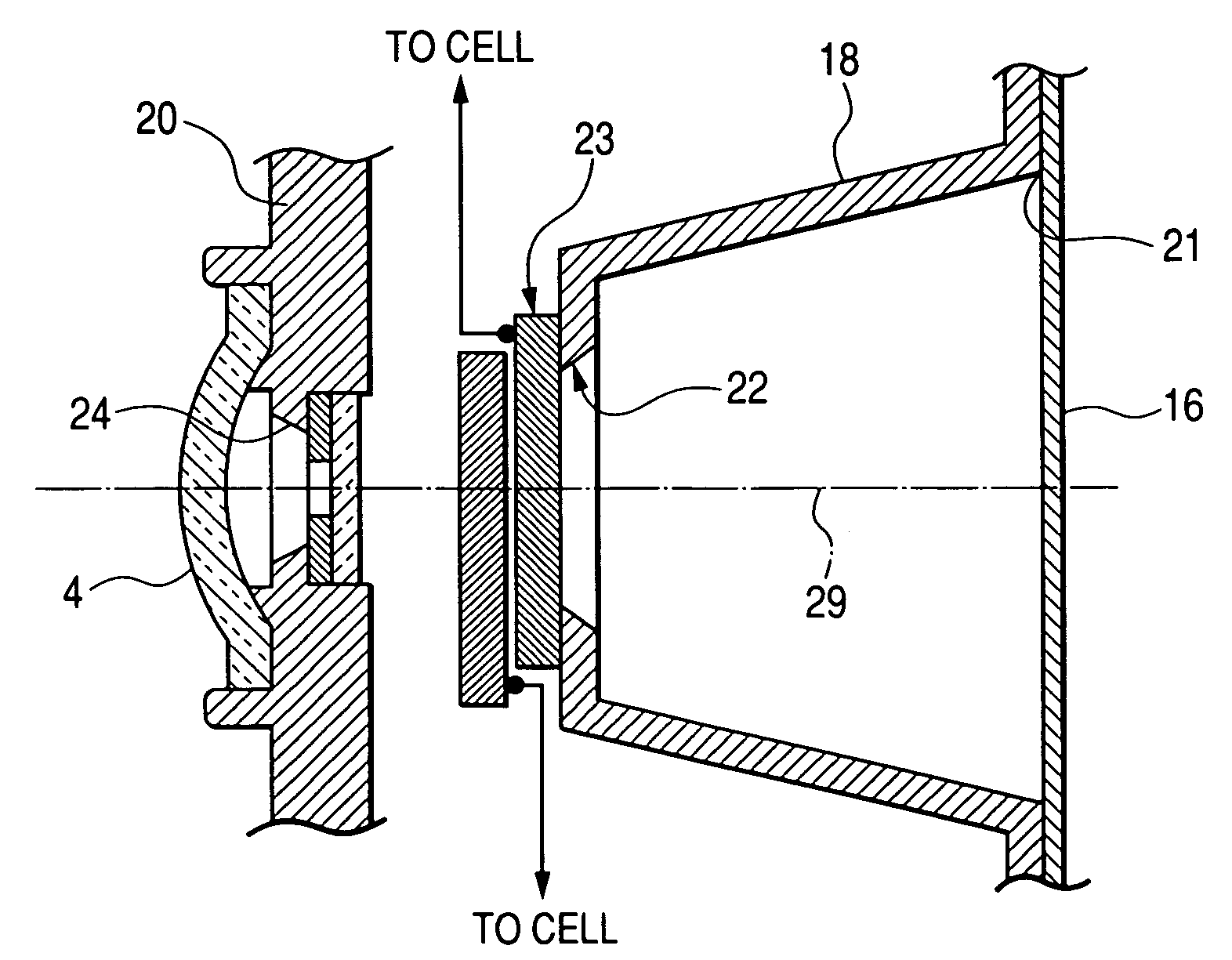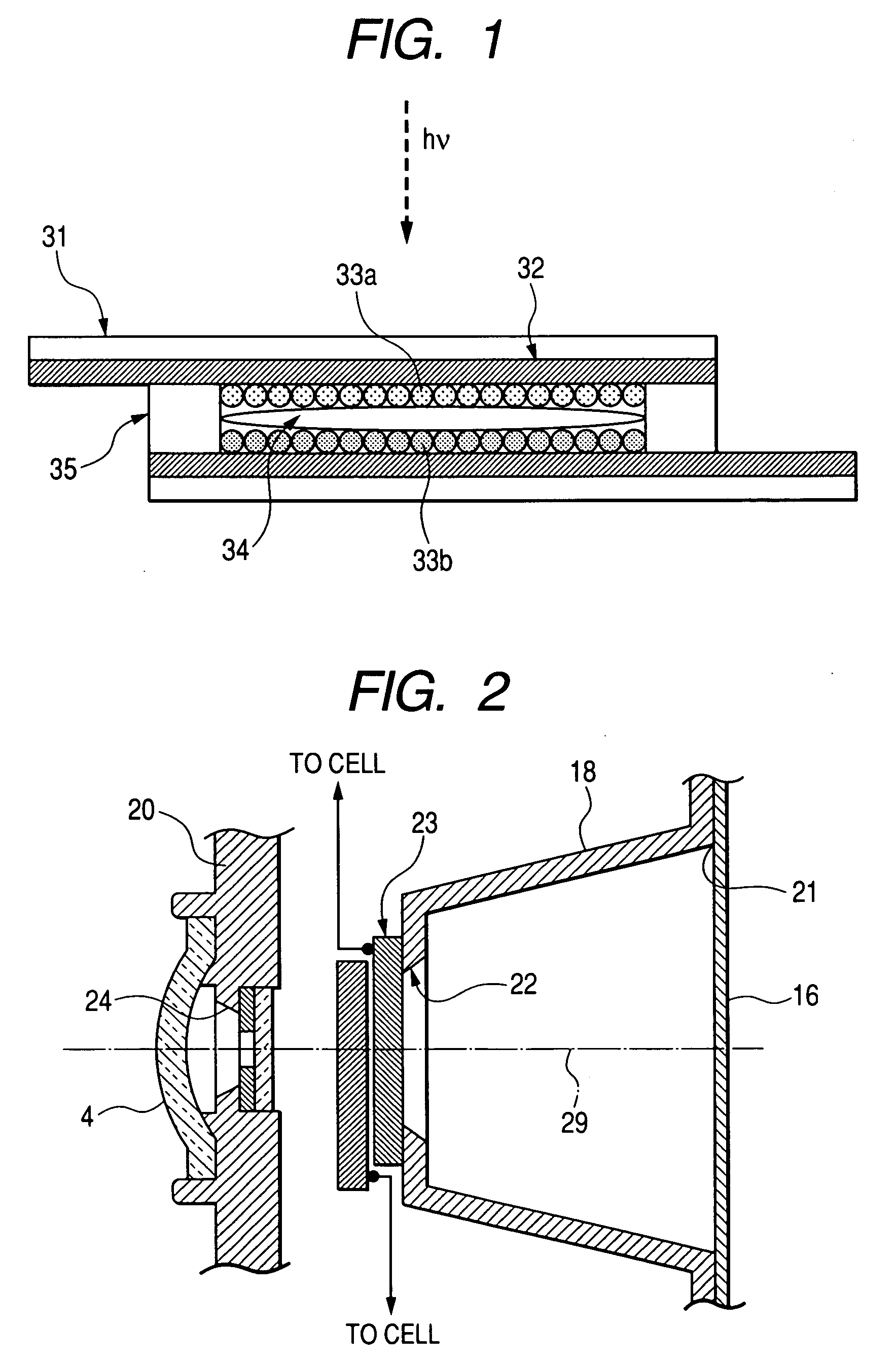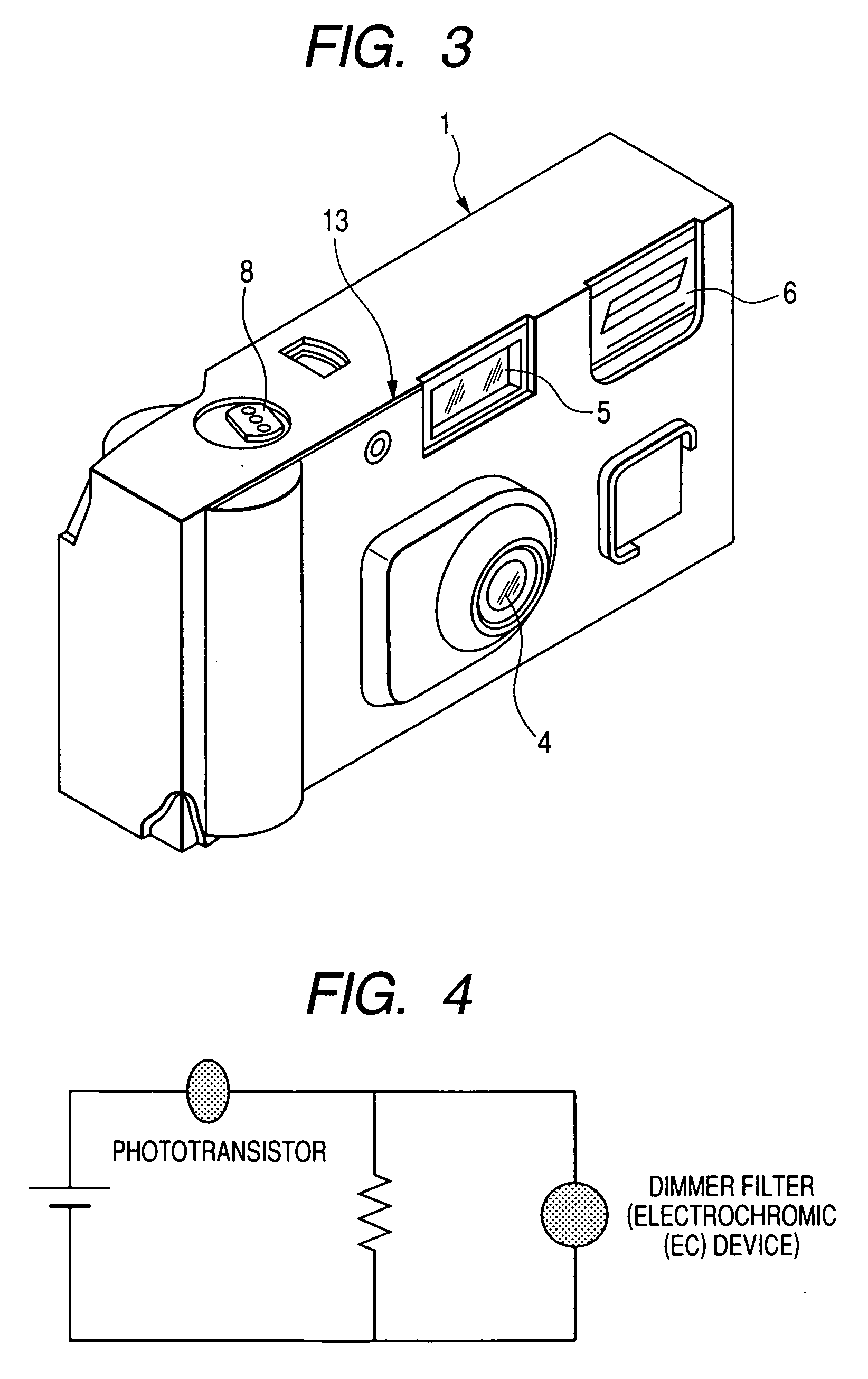Functional device, electrochromic device, optical device, and image-taking unit
a technology of electrochromic devices and optical devices, applied in the direction of thin material processing, camera filters, instruments, etc., can solve the problems of insufficient method of flat band potential control, insufficient prevention of inverse current, and insufficient use of semiconductor materials
- Summary
- Abstract
- Description
- Claims
- Application Information
AI Technical Summary
Benefits of technology
Problems solved by technology
Method used
Image
Examples
example 1
[0145] Polyethylene glycol (molecular weight, 20,000) was added to an aqueous dispersion of tin oxide having a mean diameter of 5 nm, and uniformly stirred to prepare a coating liquid. For the substrate to be coated, herein used was an antireflection film-coated ITO conductive glass sheet (thickness, 0.7 mm). The coating liquid was uniformly applied onto the ITO film of the transparent conductive glass sheet. After coated, this was heated up to 450° C., taking 100 minutes, and then baked at 450° C. for 30 minutes to remove the polymer. The coating and baking was repeated until the overall coating amount of tin oxide could be 7 g / m2, and a tin oxide nano-porous electrode having a uniform thickness was thus obtained. The electrode thus formed according to the method as above had a surface roughness factor of about 400.
[0146] An electrolytic solution was prepared by dissolving lithium perchlorate in a solvent of γ-butyrolactone in an amount of 0.2 mol / liter. A compound of No. 1 to No....
example 2
[0149] A method of fabricating a sample 202 (the invention) of the electrochromic device of the invention and that for a sample 201 (comparative sample) are described.
(1) Fabrication of Sample 201 (Comparative Example):
[0150] A sample 201 (comparative example) was fabricated according to a method comprising (i) coating with tin oxide nanoparticles for cathode, (ii) coating with tin oxide nanoparticles for anode, (iii) adsorption of electrochromic dye, and (iv) assembling into electrochromic device in that order.
(i) Coating with Tin Oxide Nanoparticles for Cathode:
[0151] Polyethylene glycol (molecular weight, 20,000) was added to an aqueous dispersion of tin oxide having a diameter of about 40 nm, and uniformly stirred to prepare a coating liquid. For the substrate to be coated, herein used was an antireflection film-coated ITO conductive glass sheet (thickness, 0.7 mm). The coating liquid was uniformly applied onto the ITO film of the transparent conductive glass sheet in such...
example 3
[0160] This is to demonstrate an embodiment of the electrochromic device sample 202 of the invention mounted on a lens-combined film unit.
[0161] The lens-combined film unit of this embodiment comprises (1) a dimmer filter 23 (electrochromic device) and (2) a phototransistor 13 (electromagnetic wave sensor) mounted therein, as in FIG. 2 and FIG. 3. The phototransistor 13 was disposed on the outer part of the unit. Accordingly, an electromotive force could be generated in accordance with the intensity of the external light around the device, and via the dimmer filter 23 as colored by the electromotive force, the quantity of light to reach the color negative film 16 could be controlled.
(1) Electrochromic Device Sample 202:
[0162] The electrochromic device sample 202 fabricated in Example 2 was used.
(2) Circuit of Electrochromic Device:
[0163] A phototransistor (Sharp's PT380) was used as an electromagnetic wave sensor; and as an electromotive force-generating element, used was a d...
PUM
 Login to View More
Login to View More Abstract
Description
Claims
Application Information
 Login to View More
Login to View More - R&D
- Intellectual Property
- Life Sciences
- Materials
- Tech Scout
- Unparalleled Data Quality
- Higher Quality Content
- 60% Fewer Hallucinations
Browse by: Latest US Patents, China's latest patents, Technical Efficacy Thesaurus, Application Domain, Technology Topic, Popular Technical Reports.
© 2025 PatSnap. All rights reserved.Legal|Privacy policy|Modern Slavery Act Transparency Statement|Sitemap|About US| Contact US: help@patsnap.com



